How To Pxe Boot Windows 7
Case: setup PXE boot server in Windows to boot some other PC
When a computer has aging hardware or arrangement errors, it may be difficult to kicking it past normal means. In this case, you can fix a PXE server to boot another estimator(s) inside the LAN.
PXE, short for Preboot Execution Environment, is a standard client-server environment that boots customer computers remotely past an administrator via network server. In that location are many significant advantages of PXE kick, for example:
- The administrator tin boot and maintain multiple PXE-enabled client computers.
- Installation disc or USB (along with CD drive or USB port) is unnecessary for client computers.
- The ambassador can solve problems and breakdowns on client computers remotely.
- It'south like shooting fish in a barrel to centrally manage installation, updating, etc. and add new computers to network.
If you lot think it'due south worth a try, keep reading and notice how to setup PXE network boot server in Windows.
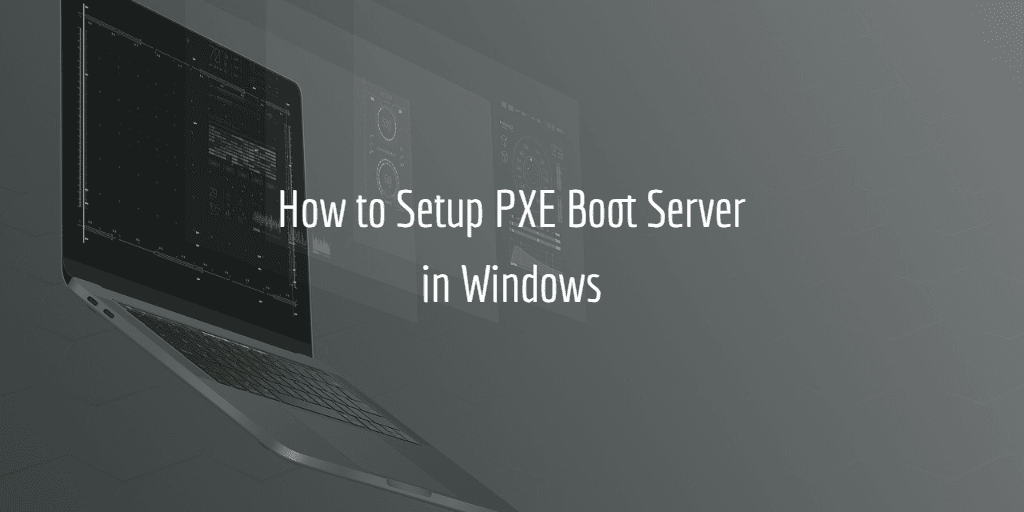
Prerequisites to PXE network kicking
Before setting up PXE kick server, each customer computer you desire to boot should run across following conditions:
1. A PXE-capable network interface controller supporting Wake-on-LAN mode
2. A wired Ethernet connectedness to the network
three. All the computers you want to boot are on the same network
How to deploy PXE boot server in Windows?
Windows PXE kicking setup basically consists of two parts - DHCP configuration and PXE kicking configuration, which takes more effort than it looks. The working process is roughly similar this:
-
The client connects to the network and sends out a DHCP circulate. The DHCP server picks upwardly the broadcast
-
The server replies with a suggested IP address, the client uses the provided address.
-
The client sends out a DHCP broadcast and states it needs to PXE boot, then the DHCP server replies it with the IP address to use.
-
The client contacts the PXE kick server to request and receive the boot file.
-
The boot file is and then loaded on the client machines.
Every bit you can meet, the operation is relatively complicated. Information technology's not recommended to setup PXE boot server on your own if you are not computer savvy or just afraid of trouble. Later all, there are plenty of tools on the market that tin simplify the procedure.
But if you insist on doing it without whatever third-party utility, here's a more detailed tutorial for your reference.
Easier mode to setup PXE boot server in Windows
Amidst all the PXE kicking utilities, AOMEI PXE Boot Tool is a good choice with its strong compatibility and easy interaction.
It's integrated in AOMEI Backupper Workstation, which is a powerful and cost-effective data fill-in & disaster recovery solution for Windows ten/8.1/8/vii/Vista/XP.
AOMEI PXE Boot Tool is particularly designed to safely kicking and maintain multiple client computers inside LAN through network. With it, you tin can directly create a Linux bootable ISO or Windows PE bootable ISO prototype file, and yous don't have to spend that much fourth dimension setting up PXE boot server.
Steps:
1. Download and install AOMEI Backupper Workstation. Go to Tools tab and choose AOMEI PXE Kick Tool.
2. Select AOMEI Windows PE Organization and click Start Service. It volition straight create a Windows PE system image for network kicking.
◉Boot from AOMEI Linux System applies to older or Linux based computers, and the third one Boot from custom image file allows you to load the special micro-system created by AOMEI PE Builder or Bart PE.
◉ Alternatively, you tin create a bootable file by Create Bootable Media in Tools tab.
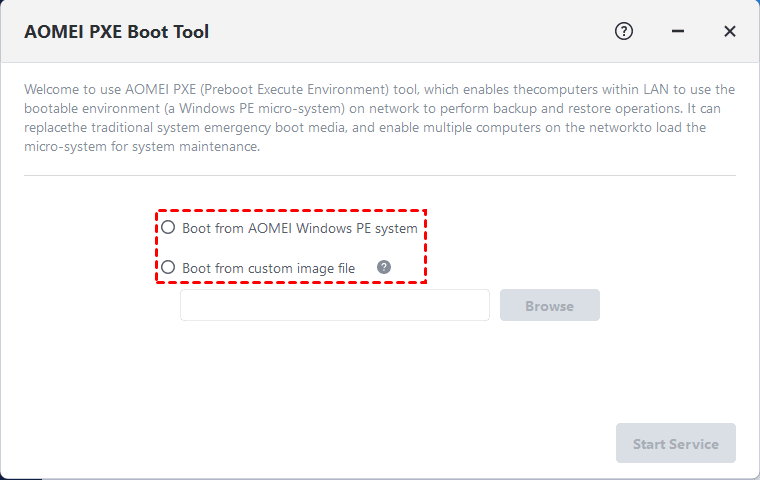
iii. Now yous can enable the computers within LAN to use PXE service. Turn on the client computers and press the required key to enter BIOS settings.
◉ The required central might be F2, F10, Del, etc., which depends on the specific make and model of the device. You lot tin can search it on Internet or refer to the user transmission.
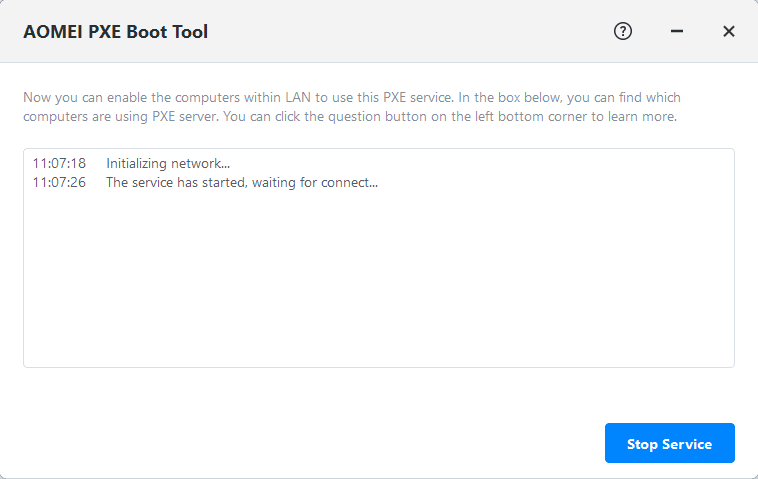
four. Observe Kick mode selection and brand your selection.
◉ In general, UEFI mode includes more security features than the legacy BIOS mode. Only if y'all're booting from a network that simply supports BIOS, y'all'll need to kick to legacy mode.
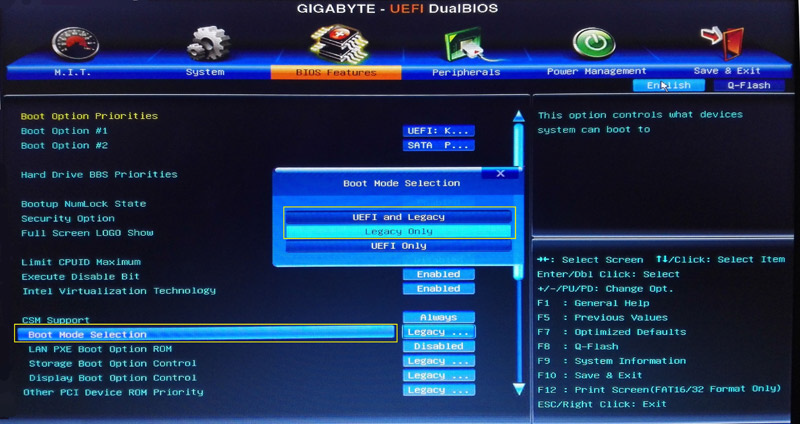
v. Then find and enable the PXE kick option.
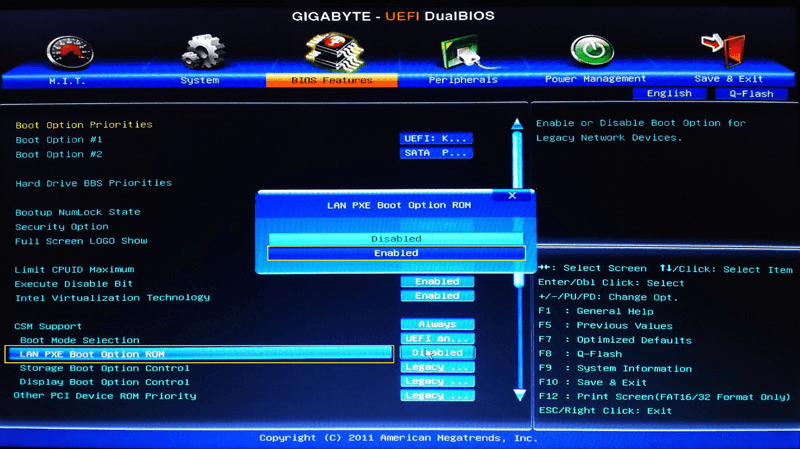
half dozen. Set the PXE pick every bit the beginning boot device in Boot Option Priorities.
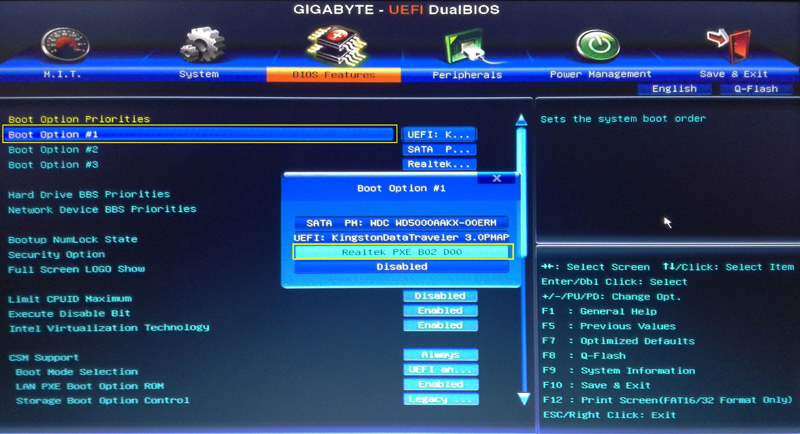
7. It will accept some time to kicking from PXE boot server, specifically depending on your network speed and the size of the prototype file.
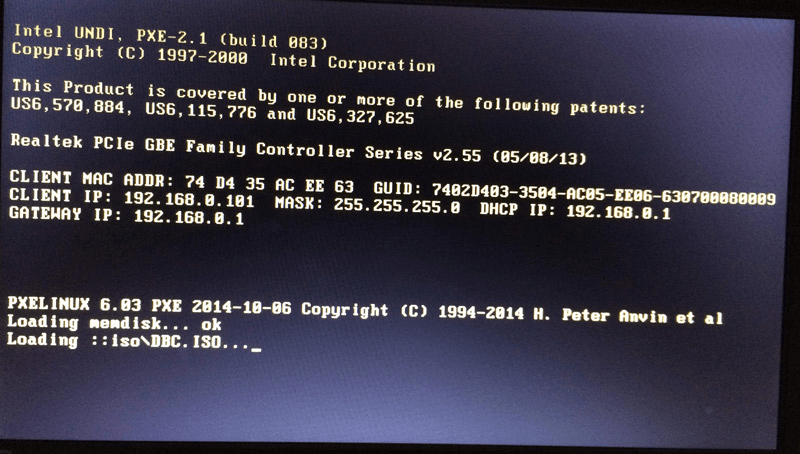
Related tips:
-
AOMEI PXE Boot Tool do back up booting UEFI machines but currently merely the WIM file tin can be used for UEFI (not the ISO file). If the file is an ISO file, y'all amend change the boot fashion to Legacy Boot Style.
-
The network speed may be impacted if there are many computers using PXE boot. Thus y'all can attempt dividing PXE kick clients into smaller groups to boost the speed.
-
AOMEI PXE Tool contains a DHCP server that can be used if an existing DHCP server is not available. DHCP is unremarkably offered by the LAN router.
Determination
PXE boot is a feasible way to boot multiple computers within LAN for arrangement maintenance even when y'all don't have any installation media. But to easily setup PXE boot server in Windows 10/8/seven, you demand the help of a reliable tool, like AOMEI Backupper Workstation. Information technology not only has a powerful born PXE Boot Tool, but likewise a Create Bootable Media tool that can be used in cooperation.
Moreover, you can deploy the system image created on one computer to others with Image Deploy tool, which is integrated in AOMEI Backupper Technician and Technician Plus.
Source: https://www.ubackup.com/pxe/setup-pxe-boot-server-windows-0326.html
Posted by: nunezhurasawends89.blogspot.com

0 Response to "How To Pxe Boot Windows 7"
Post a Comment